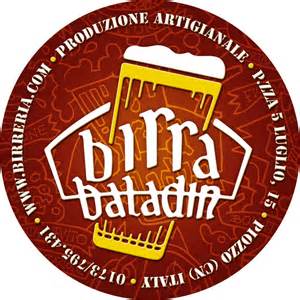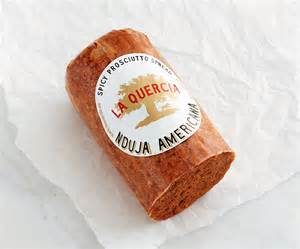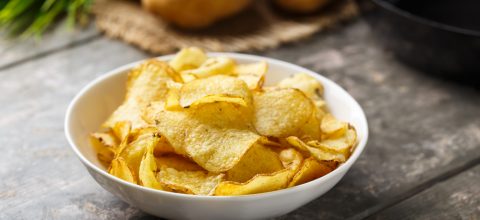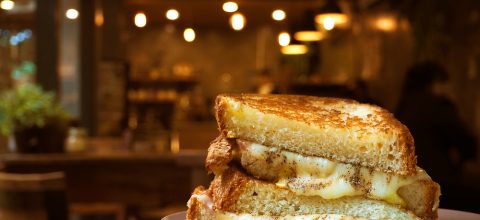I always enjoy traveling and eating locally as possible. In many of my newsletters, I have written about my experiences that I have had from mayonnaise on top of a hot dog to a pint of beer and a slice to pork pie. Getting to know a culture through its food is an amazing thing. I hope I’ve inspired some of you to do the same. However, traveling and exploring new dishes is not always about having something new, but on occasions, seeing how to actually use an ingredient instead of some ubiquitous American interpretation of how it is used in a recipe. I had one of those eye-opening moments after I recently spent a few days visiting and working in Milan.
If you study Italian food, especially regional pasta dishes, you know that there is a common technique of using cured pork products as fat for texture or for added saltiness. Think of pasta carbonara that uses speck or pancetta, or simple spaghetti with prosciutto and peas. However, I thought that most of the cured products used in pasta were dry aged and on the firm side. Cooks add these ingredients at the beginning of the cooking process to render out the fat and to create some texture. I had never really thought about finishing a dish with a cured meat product to develop a sauce; I’ve always known it as a garnish. In Milan, that all changed after standing on my feet for 12 hours and hungry for anything. We chose the closest restaurant to the hotel, which was a comfortable, somewhat elegant restaurant that served a great meal. From the large bottle format Italian beers (delicious), to the perfect octopus and potato antipasto, to fresh porcini pappardelle to, in my opinion, the star of the meal, strozzapreti Nduja.
Strozzapreti pasta is hand formed and translates to “priest-choker,” – not politically correct in today’s world – but not the subject of the story. It was the sauce made from Nduja. So, what is it and why would I add it in my food? Nduja is a spreadable spicy Calabrian sausage. The name came from the French word andouille or sausage. No, it is not the rice-based sausage from the bayous of Louisiana; it’s like a spicy liverwurst. I have seen it becoming more popular lately and it is appearing on grocery store shelves. La Quercia in Iowa makes a great American style; however, it is not just emulsified leftovers piped into a casing. In Calabria, it is held in reverence. Nduja is a pinnacle symbol of Calabrian cuisine. Nduja even has it’s own festival. Our so-called “Bacon Fests” are probably amateur productions compared to that one.

When I think of the food from the “tip of the boot,” I understand the tomatoes, chiles, garlic and wine in pasta sauces, but not a spreadable pate. I have purchased Nduja many times at home and always only spread it on grilled bread. I was limited in my thinking. Case in point, a couple of days earlier we had a plate of lardo and bread as an appetizer.
I never though about tossing hot pasta with a soft meat spread, olive oil, salt and fresh herbs to make something luxurious and simple. This process of finishing pasta sauces with a pureed fat, as seen around Calabria, is common in the cuisine. Some TV chef may come along and do the same and they would call the chef inventive, but they are just copying something that has evolved over years in Southern Italian kitchens.
As a chef, this was another huge moment for me. I unwittingly threw out my perceptions of an ingredient and saw a clarity in cooking that doesn’t happen as much as it should. Just because it is assumed how a product is used or how it is to be eaten, doesn’t mean it is right. Eating this tasty unimposing dish, I learned another trick for my portfolio. Finishing and developing sauces with fat is awesome; butter, Nduja, foie gras and mascarpone are all in my pantry now. So, why not with purees that have the same viscosity like parsnips, carrots and sweet potatoes? If I had never seen Nduja as a pasta sauce or learned about it on a pizza, I wouldn’t have stretched it out to other thought processes. This is the beauty of great ingredients in the hands of cooks who don’t settle. They push the envelope and master techniques by making subtle or almost silent movements in the details that when applied, they make a huge striking impact at the point of attack, in our case the palate.
Beer
Birra Baladin

You can find a few bottled conditioned samples around if you look. Unfortunately, their Beer nina is only available on tap in Italy, but it’s definitely worth the trip for.











